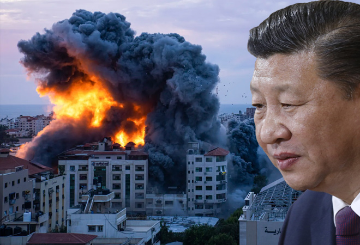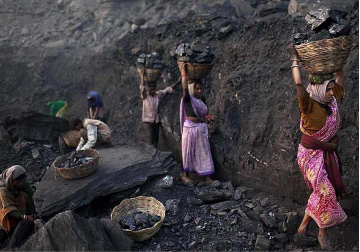
The pandemic and subsequent lockdown across the country has created extraordinary challenges for citizens and governance and brought the economy to a standstill. According to the Centre for Monitoring Indian Economy, 27 million Indians, between the ages of 20-30 years, lost their jobs in the month of April 2020. What makes the current economic crisis unique is that it is born out of a global health emergency as a direct consequence of weak environment regulation.
With a youth population of over 33% of its 1.3 billion people, economic development leading to job creation is one of India’s biggest challenges and a stated priority. Since 2014, India has seen a steady rise in the World Bank’s Ease of Doing Business ranking from 142nd (2014) to 63rd (2019) out of 190 countries. During this same time period, India has seen a subsequent decline from 155th (2014) to 177th (2018) out of 180 countries ranked on the Environmental Performance Index. This apparent dichotomy suggests the need for greater national sustainability efforts in the evaluation of development activities with due consideration to environmental health and ecosystem vitality.
The Environmental Impact Assessment (EIA) acts as a significant tool to integrate environmental safeguards at the planning stage for minimum adverse impact.
On 23 March 2020, the Ministry of Environment, Forest and Climate Change (MoEFCC) issued the Draft Environmental Impact Assessment (EIA) Notification, 2020, which is slated to replace the EIA notification, 2006, and have sought public comments. The Environmental Impact Assessment (EIA) acts as a significant tool to integrate environmental safeguards at the planning stage for minimum adverse impact. The central government, in seeking to make the process more standardised and transparent, has proposed major changes in the way projects will be granted environmental clearances and further regulated.
| Category |
Appraisal Process |
Regulatory Authority |
| A |
1. Scoping: Issued a Terms of Reference (ToR) for the preparation of EIA report
2. Draft EIA Report
3. Public Consultation
4. Final EIA Report
5. Appraisal: Expert Appraisal Committee (EAC)
6. Grant or Reject Prior- Environment Clearance (EC) |
Ministry of Environment, Forests and Climate Change (MoEFCC) |
| B1 |
1. Screening (EIA 2006)
2. Scoping: Issued a Terms of Reference (ToR)
3. Draft EIA Report
4. Public Consultation
5. Final EIA Report
6. Appraisal: State Expert Appraisal Committee (SEAC)
7. Grant or Reject Prior- Environment Clearance (EC) |
State Environmental Impact Assessment Authority (SEIAA) |
| B2 |
1. Screening (EIA 2006)
2. Scoping: Issued a sector-specific Terms of Reference (ToR)
3. Environmental Management Plan (EMP)
4. Verify completeness by Regulatory Authority
5. Grant or Reject Prior- Environment Permission (EP) |
State Environmental Impact Assessment Authority (SEIAA) |
*The EIA also prescribes a procedure for enforcement and monitoring of the environmental conditions.
The draft notification presents five key concerns
i. Eased processes for industry
The notification includes 43 sectors within its regulatory purview across three categories on the basis of maximum threshold limits — A, B1 and B2, omitting prior screening requirements for Category B projects and expanding the list of projects categorised under B2. For instance, under EIA 2006 Micro, Small and Medium Enterprises (MSMEs) were not a differentiating criterion when assessing environmental impact. The draft notification classifies projects undertaken by MSMEs within non-toxic secondary metallurgical processes, cement plants, petroleum products, synthetic organic chemicals (incl, dyes and dye intermediaries, synthetic rubbers, basic organic chemicals) and paint manufacturing as Category B2, requiring only a Prior- Environmental Permission (EP), without an EIA report, detailed appraisals or public consultation.
Infrastructure and industrial projects have significant social and environmental impacts. In 2016, 100 of India’s industrial areas were categorised as severely or critically polluted.
Existing projects choosing to modernise by making changes to process or technology or expand capacity by 10% (up to 50% in certain cases) shall be issued an online approval without any requirement for prior appraisal. Infrastructure and industrial projects have significant social and environmental impacts. In 2016, 100 of India’s industrial areas were categorised as severely or critically polluted. Compromising appraisal in such cases will only result in further damage.
The notification also proposes to standardise Terms of Reference (ToR), as per sector-specific ToR issued by relevant line ministry, for preparing an EIA report, unless project specific or location specific ToR, prescribed by the Expert Appraisal Committee (EAC), is deemed necessary for the preparation of an EIA report. The EAC is a part-time body, nominated by the Regulatory Authority, whose resources are limited. For instance in April 2020, the EAC held nine meetings through video conferencing, where projects were given 10 minutes each for examination. Several industrial, mining and infrastructure projects were considered and cleared. Failure to take due consideration when evaluating individual projects is counterintuitive to MoEFCC’s role as its primary guardian.
ii. Greater exemptions proposed for inland waterways
The draft notification proposes to classify inland waterways as Category B2 projects and will not require public consultations irrespective of whether these projects are located in notified ecologically sensitive areas. In 2016, with the National Waterways Act, the ministry of shipping launched its plan to convert 111 river stretches into waterways and 37 of those were prioritised. Inland water transport has been promoted as an environment friendly and cost effective mode of transport despite the requirement of dredging for building and maintaining waterways. The draft notification further exempts maintenance dredging from requiring prior-EC or prior-EC. Removing large parts of riverbeds to maintain the depth at terminals or create new shipping channels will have a significant impact on the marine ecosystem and long-term survival of India’s rivers.
iii. Ex-post facto clearance to projects operating without Prior-EC
Projects beginning construction work, installation, excavation or have undertaken expansion without being issued a Prior-EC are in direct violation of the EIA Notification. As per a judgement made by the National Green Tribunal (NGT), on 8 January 2016, the grant of ex-post facto environmental clearances to projects operating without valid consents is contrary to law. The NGT issued a series of actions including revocation of environmental clearances and for closing down industrial units for projects in violation.
On 7 May 2020, a gas leak at the LG Polymers plant was responsible for killing 12 people, with 1,000 others being evacuated from their homes. The company had been operating without a valid prior-EC since 2017.
The draft notification proposes to institutionalise de-facto approval of projects that have started without Prior-EC. The notification defines a standard procedure to bring such violation projects under regulation. Industrial projects, operating without prior-EC, will have the right to seek approval from the Environment Ministries’ EAC so long as the project is operating in a site permissible by law and its expansion is sustainable under compliance of environmental norms. Since 2017, the MoEFCC has held 33 meetings of the EAC for proposals involving violation of EIA Notification. The most recent meeting held on 18-19 May evaluated a proposal made by LG Polymers. LG Polymers has been manufacturing polymers of styrene, a flammable liquid, used in various plastic products in Vizag, Andhra Pradesh for 19 years. On 7 May 2020 a gas leak at the company’s plant was responsible for killing 12 people, with 1,000 others being evacuated from their homes. The company had been operating without a valid prior-EC since 2017.
iv. Public consultation process diluted
The draft proposes to expand the list of projects that do not require public consultation before receiving Prior-EC. Public consultation through the involvement of those likely to be affected by the environmental impact of the project, ensures the EIA process is open, transparent and robust by taking into account all such concerns during the planning stage. Included in the list of exemptions are all projects involving “strategic conditions” as determined by the central government. Labelling projects “strategic” could result in individual states finding themselves in a trade-off between high profile and action-oriented development initiatives at the risk of environmental degradation.
The draft also exempts all linear projects like pipelines and highways in border areas, all offshore projects located beyond the 12 nautical miles, and all building construction and area development projects. Of concern are the blanket clearances to building and housing projects upto 50,000 sq. mtrs. of built-up area. The construction lobby has been at the centre of numerous cases regarding Prior-EC norms, the proposed amendments to the notification provides builders greater benefits at the cost of weakening the EIA.
v. Decreased frequency of compliance reports
The draft proposes an eased monitoring mechanism for compliance of conditions of Prior-EC. The EIA mandates project proponents to safeguard immediate surroundings of the project based on issues raised during the public consultation and assessment carried out in the final EIA report. As per the draft EIA 2020 project, proponents would be required to submit a compliance report annually in contrast to every six months under the EIA notification 2006. The draft also proposes to increase the validity of the approval period for key industries such as mining from 30 to 50 years, river valley, irrigation and nuclear power projects from 10 to 15 years and all other projects from five to 10 years.
Since publishing the Draft EIA 2020 Notification, swarms of locust have invaded the Indian subcontinent beginning April 2020 and will likely affect agricultural supply chains across seven states in India. Cyclone Amphan and Cyclone Nisarga caused widespread destruction in Eastern India and Maharashtra.
It is important to note that easing environmental norms will not boost economic growth. India is currently the fifth most vulnerable country to climate change. Since publishing the Draft EIA 2020 Notification, swarms of locust have invaded the Indian subcontinent beginning April 2020 and will likely affect agricultural supply chains across seven states in India. Cyclone Amphan and Cyclone Nisarga caused widespread destruction in Eastern India and Maharashtra, respectively. All three events are a consequence of extreme weather conditions linked to climate change. India has already lost a third of its coastline, a third of its grasslands and is losing wetlands at the rate of 2-3% per year, thereby weakening our natural defenses to climate-borne disasters.
On 8 June 2020, a massive fire erupted at an Oil India Limited (OIL) production well in Baghjan, Assam, after an oil well blowout at the plant had been leaking highly flammable natural gas uncontrollably since 27 May 2020. Over 1,600 families in the vicinity of the blowout have been evacuated to relief camps. OIL received Environmental Clearance for drilling and testing in Dibru Saikhowa National Park in May 2020, a mere 2 km away from the site in Baghjan. With an absence of stringent environmental safeguards incidents like these are bound to increase with greater frequency.
Now, more than ever, India must address the increasing social, economic and environmental challenges and strengthen our systems on a path towards resilience. Inability to work towards this agenda puts India at the risk of being left behind in terms of economic competitiveness, international reputation, and citizen well being.
The views expressed above belong to the author(s). ORF research and analyses now available on Telegram! Click here to access our curated content — blogs, longforms and interviews.




 PREV
PREV


